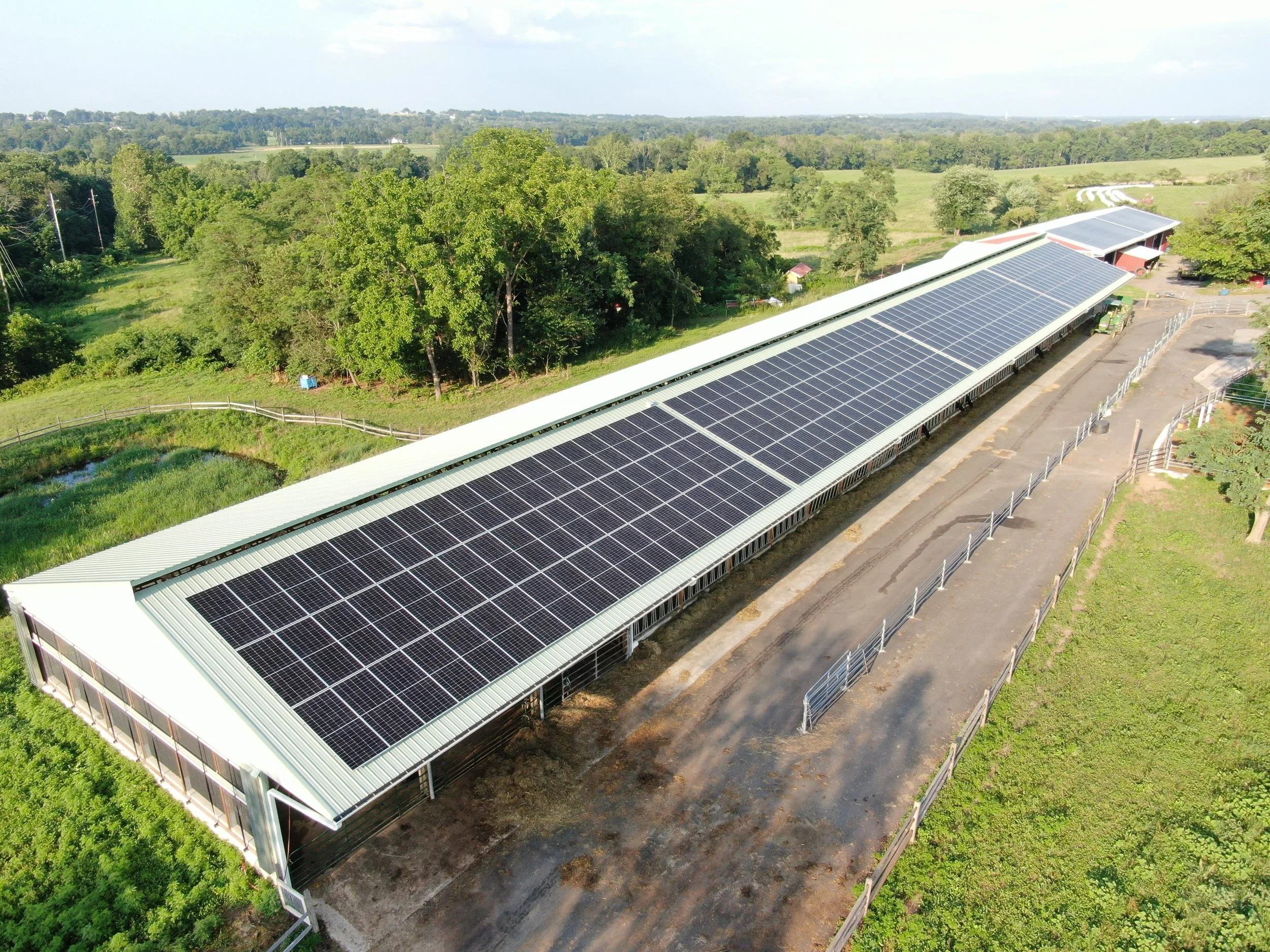Camphill Village Kimberton Hills Clean Energy Transition Plan
Plan, Setbacks, Progress
Camphill Village Kimberton Hills and Environmental Responsibility: A report on our community’s response to the global climate crisis
Early in 2024, the work of many at Camphill Village Kimberton Hills culminated in the drafting of our Clean Energy Transition Plan. In this document we attempted to create a comprehensive picture of our goals as a responsible partner in the fight against global warming and as a community that includes an especially vulnerable population. The planning process was exciting and challenging. The plan that resulted will need refinement and alteration as circumstances change and opportunities present themselves, but we think it is a good start.
Here you’ll find the main components of the plan, the setbacks we experienced in trying to carry it out, and the progress we’ve made despite the setbacks. Our story of hope, disappointment, and determination is a familiar one.
The Camphill Village Kimberton Hills Clean Energy Transition Plan has four main components:
1. Energy Efficiency.
12 of our buildings are due for a roof replacement. By using highly reflective roofing materials, we will reduce cooling loads significantly.
15 buildings are targeted for new or upgraded insulation to minimize heat loss/gain and reduce energy consumption.
11 buildings (beyond those already done) will have their windows replaced with advanced, energy-efficient models that meet or surpass the current Pennsylvania building standards for thermal insulation and energy performance.
We will replace all the lighting fixtures and bulbs in common-area spaces and non-residential buildings under a PECO rebate incentive program.
2. Electrification. Major household appliances, as well as heating and cooling systems in all residential and common buildings, will be converted to electric and away from fossil fuels.
3. Renewable Energy Generation. The plan calls for installation of solar panels and an energy warehouse system consisting of large batteries that will provide backup power for CVKH residences in the event of a grid failure/power outage.
4. Transportation. We plan to transition our entire fleet of 23 vehicles to electric vehicles. To ensure our fleet is always ready to meet operational demands, we will be installing 20 Level 2 charging stations: one per house, and the remaining in common building areas, some of which will be open to the public (such as Rose Hall and the CSA parking lots).
Setback
We were encouraged when our Clean Energy Transition Plan — with the exception only of the transportation component — was chosen by the Philadelphia Energy Authority (PEA) after a thorough vetting process for inclusion in their April 2024 Climate Pollution Reduction grant application to the Environmental Protection Agency.
Unfortunately, PEA learned in July 2024 that their grant request was not successful — only six awards were made in that application tier nationwide. PEA pledged to continue to work with us to bring our project to fruition. It was expected that other funds would become available through the Biden administration’s Inflation Reduction Act and related infrastructure grant programs. However, with executive actions by the Trump administration since January 2025 and passage of the recent tax and spending bill, these hopes were dashed.
Progress
Despite these setbacks, progress has been made as we transition to clean energy, guided by the plan.
In the area of energy efficiency, LED lights have been installed as part of the swimming pool renovation.
In the area of electrification, the Franklin and Sassafras houses’ gas stoves have been replaced by electric stoves.
In the area of transportation, one more community vehicle was replaced by an electric vehicle and a new charging station was installed.
The most significant progress since the setback is a 327-panel solar array that now sits atop two of our Dairy buildings. This installation will ultimately generate more than 60% of the current electrical needs of our community and result in significant savings in our electric bills.
Next Steps
Currently, electricity generated by our solar installation is transferred to the grid for payment from the Philadelphia Energy Company (PECO) in the form of a reduction of our electricity bills. The next step to increased savings is the purchase of batteries for electricity storage and wiring to the houses — starting with Farmhouse and Pfeiffer and then to more distant houses so they can be powered by our solar installation.
Progress will continue. The details of the Clean Energy Plan will evolve as new circumstances, new technologies, and new opportunities change. We remain committed to achieving a full transition to clean energy.
The installation of our solar panel array was done by TerraSol Energies, Inc. and Ginnona Electric, at a cost of $381,920.
We are deeply grateful to the following generous donors who made this possible:
Anonymous
Phillys Anderson
Nancy Bannister-Char
Gayl Beratan
Stephen Blumm
Stephanie Bromleigh
Lynn Brubaker
Francis Cape
Olivia Carino
Ruth Fox
Lee Combrinck-Graham
Susan Hill
The Estate of Margery Leidig
Laura Lorenzen
Kimberly Marino
Robert Mark
James and Joan Moore
Mark and Deborah Nulman
John Paylor
David Santoleri
Barbara Schneider
Jane Steele
Stewart and Anne Throop
Regina Wagner
Janet Wallace



